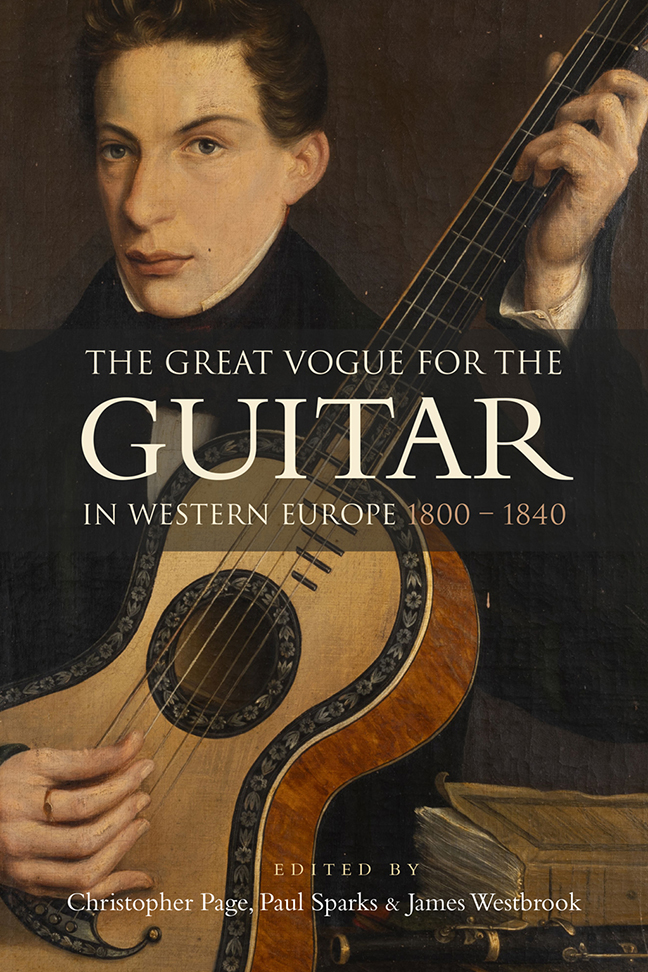Book contents
- Frontmatter
- Dedication
- Contents
- List of Illustrations
- Music examples
- The editors and the contributors
- Foreword
- Acknowledgements
- List of Abbreviations
- Introduction: The Great Vogue for the guitar
- I Contexts
- II The repertoire and its composers
- Appendix: A note on string-making
- Glossary of guitar terms
- Select Bibliography
- Index
7 - Early-nineteenth-century guitars in the saleroom, private hands and public collections
Published online by Cambridge University Press: 10 January 2024
- Frontmatter
- Dedication
- Contents
- List of Illustrations
- Music examples
- The editors and the contributors
- Foreword
- Acknowledgements
- List of Abbreviations
- Introduction: The Great Vogue for the guitar
- I Contexts
- II The repertoire and its composers
- Appendix: A note on string-making
- Glossary of guitar terms
- Select Bibliography
- Index
Summary
Every guitar has its own unique story. Perhaps it accompanied a sea captain to war, figured in a family history of espionage or even went into outer space with an astronaut. Such things have been known. Some guitars hold mysteries – initials on mother-of-pearl plaques, signed labels, owners’ names and addresses pasted on guitar cases – that are waiting to be unravelled. Others, perhaps recorded in auction lists or newspaper reports, lie undiscovered in the basements of museums, uncatalogued and forgotten; they may even be hanging forlorn (and perhaps unrecognised for what they are) on a neighbour's wall. Yet, although many guitars survive from the first three decades of the nineteenth century, the instruments sold in salerooms or kept in museums and private hands represent only a small proportion of what was once in circulation. No more than a few scattered inventories and sporadic instances of luthiers who numbered their instruments survive to tell us how many guitars a given maker produced; yet when we can form an assessment of a maker's productivity in relation to what we now possess, the result is sobering.
Output and survivals
Some guitar makers were remarkably prolific. The meticulous research done by José Romanillos has revealed several workshop inventories of guitarreros, some of which make for extraordinary reading. In 1780, for instance, Marcos Antonio González had forty-seven guitars in preparation. Much later, in 1872, Manuel Nieto Peñalver's workshop contained a staggering 704 finished guitars, 300 sets of wood for guitar backs and ribs, and fifty soundboards, even though there were only two workbenches. Now let us turn to some survival rates in relation to known output. The opus numbers inside the ‘melophonic’ guitars made by the London firm of Dominique & Arnould Roudhloff show that they built approximately 300 such instruments between about 1841 and 1857 (one, at least, was played by Giulio Regondi). At present, just twenty-three are known, a survival rate of 7.5 per cent. Louis and George Lewis Panormo, the only other London makers whose output we can assess, are estimated to have built in excess of 2,000 instruments between about 1816 and 1877. Currently, I know of 182 surviving examples, which may seem a significant quantity, though it represents only about 9 per cent of the total.
- Type
- Chapter
- Information
- The Great Vogue for the Guitar in Western Europe1800-1840, pp. 107 - 120Publisher: Boydell & BrewerPrint publication year: 2023



